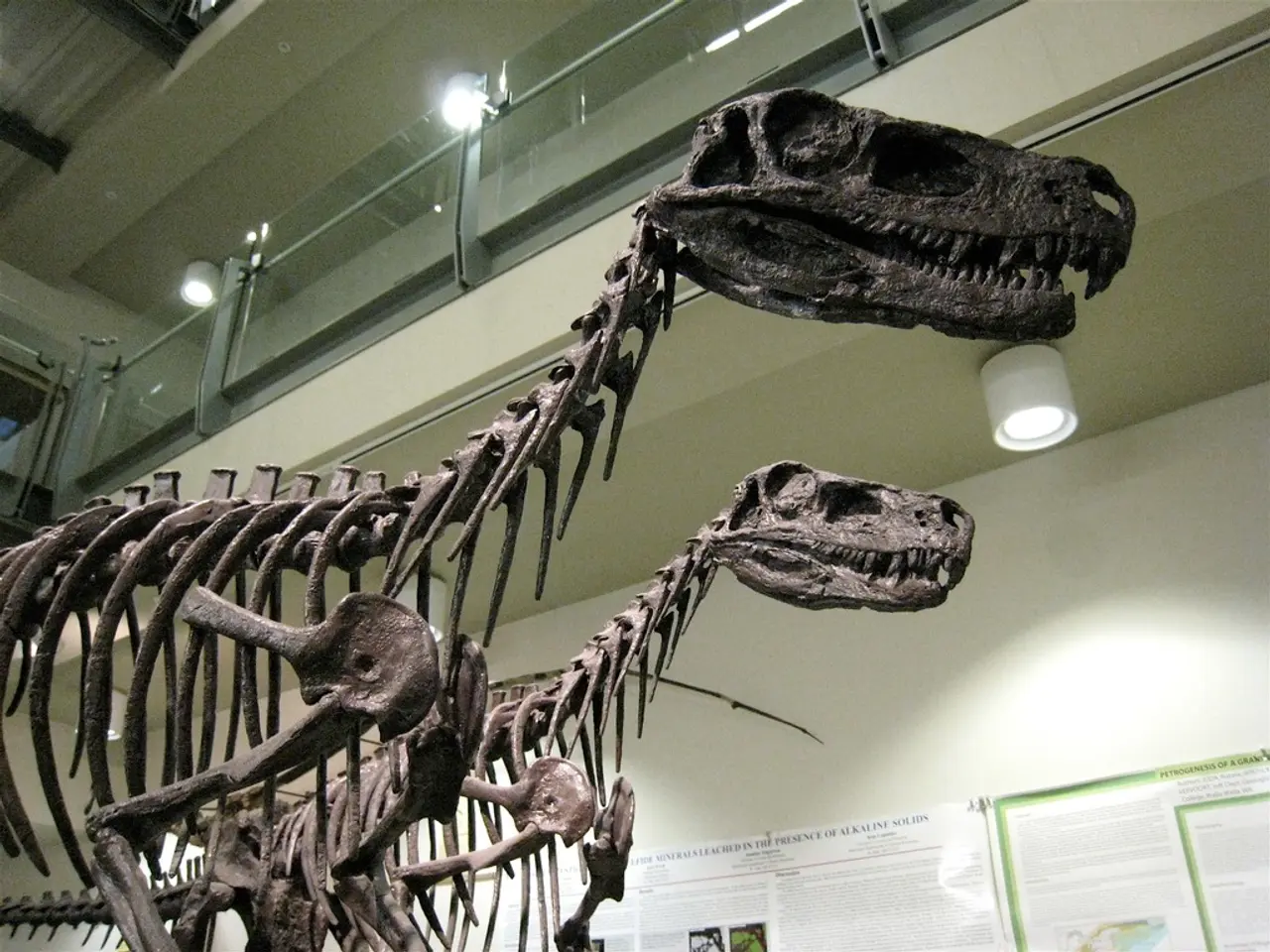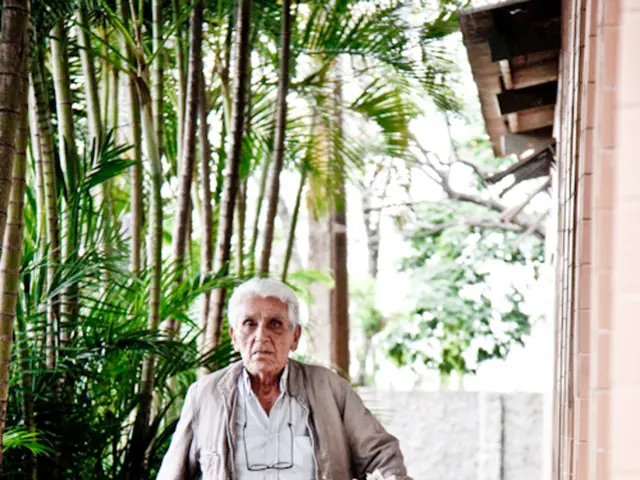Diminished dinosaur dimensions linked to shift in diet towards termites
In a groundbreaking study, researchers at the University of Bristol and the Institute of Vertebrate Paleontology and Paleoanthropology in Beijing have uncovered a surprising transformation in the evolution of alvarezsaurs, a group of dinosaurs that once roamed the Earth from the Late Jurassic to the Late Cretaceous (160 to 70 million years ago).
The study, led by Zichuan Qin, a PhD student at both institutions, reveals a dramatic reduction in the size of alvarezsaurs about 100 million years ago. This revelation was made possible through the meticulous work of Qin, who measured the body size of various alvarezsaurs and mapped these across an evolutionary tree.
The researcher involved in this study is Xing Xu from the University of Bristol. The study was co-authored by Prof Michael Benton, one of Zichuan's supervisors at Bristol's School of Earth Sciences, Dr Qi Zhao, an expert on bone histology, and Professor James Clark in Washington, DC, one of the first discoverers of tiny alvarezsaurs from Mongolia.
Initially, alvarezsaurs were not small or ant-eaters. They ranged in size from 10-70 kg for most of their existence. However, around the same time as they adopted an ant-eating diet, they plummeted to chicken-sized animals.
The Cretaceous Terrestrial Revolution, which marked the emergence of modern-style forests and woodlands, likely played a significant role in this transformation. This period was characterized by diverse plants and animals, including insects that specialised to pollinate the new flowers and to feed on their leaves, petals, and nectar.
Alvarezsaurs, slender, two-legged predators, pursued lizards, early mammals, and baby dinosaurs as their diet for most of their time on Earth. However, their diet underwent a significant change, from flesh to termites, coinciding with their dramatic size reduction.
This sudden body size reduction and claw shape change was associated with a change in diet from flesh to termites. The earliest alvarezsaurs, like Haplocheirus, were relatively large, close to the size of a small ostrich. Over time, their bodies shrank, and their claws transformed from grabbing and cutting to punching.
One of the smallest alvarezsaurs, Mononykus, had a short and stout arm with only one finger modified as a short spike, making it ideal for punching a hole in the side of a termite mound. Some of the alvarezsaur specimens, especially the chicken-sized ones, were juveniles, and this was determined through sections through the bone.
The study identifies a second miniaturization event in dinosaurs, but it was not for flight, but to accommodate a new diet. This fascinating discovery adds a new chapter to our understanding of dinosaur evolution and dietary adaptations.
The paper, titled 'Growth and miniaturization among alvarezsauroid dinosaurs', is published in Current Biology. This research underscores the importance of continued exploration and study in the field of paleontology, offering valuable insights into the lives of these ancient creatures and their role in the history of life on Earth.
Read also:
- Europe's mandatory vaccination programs advocated by health officials in the face of mounting disinformation
- Rural farm communities sound the alarm over the perilous state of livestock deliveries
- Initial Nutrient for Boosting Immune System: Reasoning Behind Blueberries Being an Ideal First Food for Infants
- EU's ban on bean exports from Nigeria results in an annual loss of $363 million for the country, according to AAPN.








